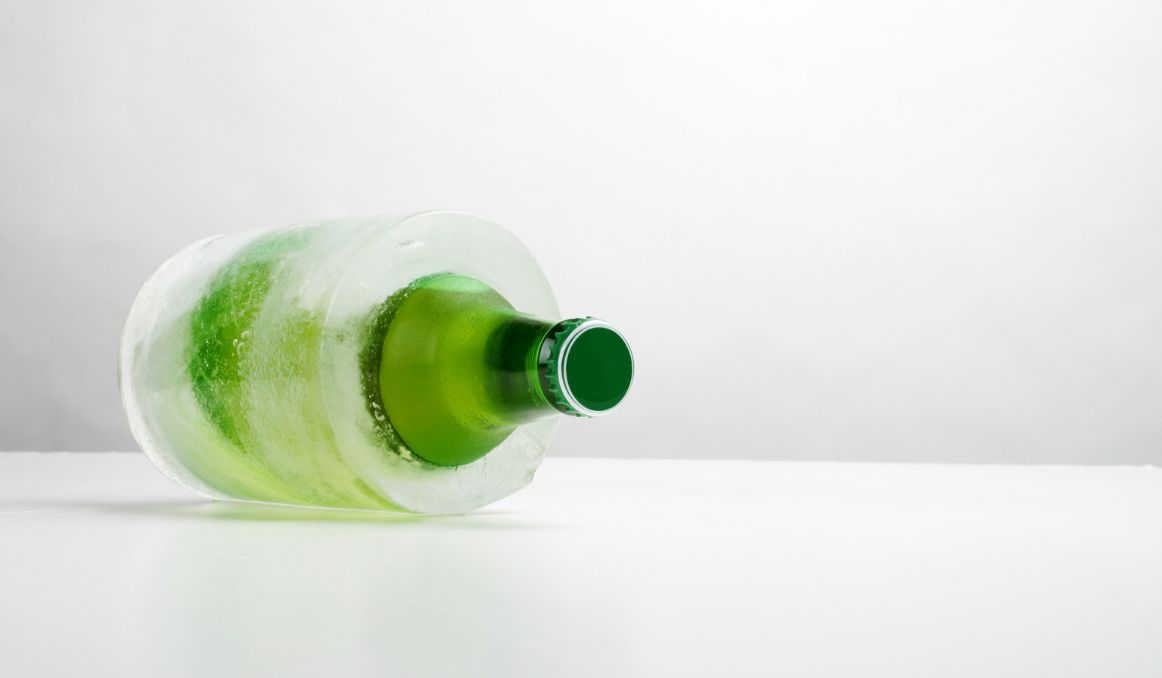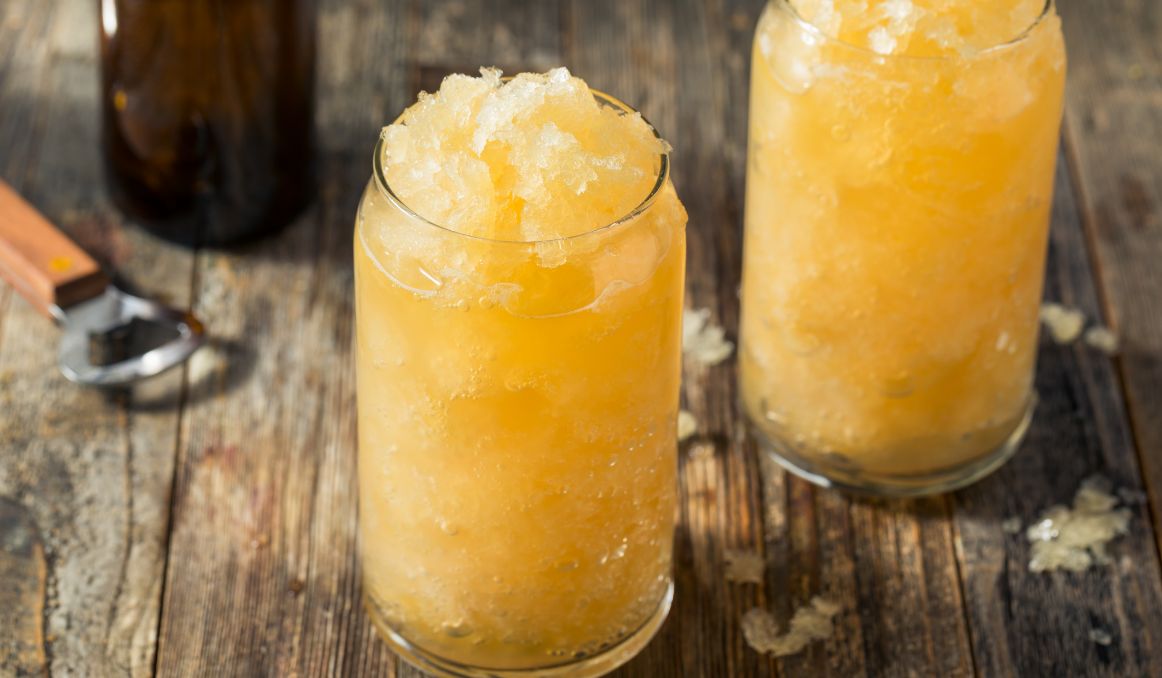What Is the Freezing Temperature of Beer?
Most of us have done it. We get home from running around all day, bring in the room temperature beer, and pop one in the freezer to chill quickly to enjoy. Then, as life happens, we end up running around some more, putting things away, maybe take a phone call or end up scrolling through social media. Before you know it, you forgot all about it and you end up with a frozen beer. If you’re really unlucky, the beer exploded and made a huge mess in the freezer, complete with slush and glass shards.
So, what is the freezing temperature of beer anyway? How do you prevent that from happening? And what, if anything, can you do with frozen beer? More than you can imagine.
Frozen Alcohol
The controversy comes up so often because most of us know that pure alcohol will not freeze. Well, it will, but not until it hits –114 degrees Celsius (-173.2 degrees Fahrenheit). Indeed, a huge percentage of the global population stores vodka in the freezer!
But… they don’t store whiskey in the freezer? What’s the difference.
Vodka is what is considered a “clean” spirit. You won’t find a lot of complexity in terms of flavor and aroma profile. It’s just a straight, clear distilled beverage. Whiskey, on the other hand, is often blended, barrel aged, and combined with fruit or spice. To bring out those complexities, you want to serve it warmer.
So, while alcohol and, in general, many alcoholic beverages won’t freeze until they get really, really cold, some alcohol is best served much warmer than freezing.
Frozen Beer

So what happens with beer, then? Beer is alcohol, too, right? Yes. And no.
Beer has alcohol in it. But it is far from pure alcohol, much farther than a distilled spirit. Most beers average between 4% and 7%. Everything else in the beer is considered water, and water loves to freeze, and it loves to freeze fast. Thus, while the alcohol in the beer tries not to freeze, the water in your beer is in a rush to slush. That’s why, hours later, when you return to your freezer, you won’t find an ice cube in your bottle, as your beer most likely didn’t freeze completely, but you will find lots of beer slush.
Remember, too, that water expands as it freezes, which is why your beer explodes, often breaking the glass or bursting the can.
As there are so many different types of beer, it’s difficult to say what the exact freezing point is for beer, in general, but, depending on its alcohol content, beer will freeze at around 27 degrees Fahrenheit.
What to Do About Freezing Beer
You’re on the right track when it comes to cooling down your beer fast. The best way to achieve this goal is to use the freezer. But you don’t have to wait an hour or two for it to cool off. You don’t even have to wait 30 minutes. Simply get a paper towel wet, wrap that paper towel around your bottle, and pop it in the freezer. Ten minutes later, you will have a nice, chilled beer.
Don’t Freeze It!
In point of fact, you don’t actually want your beer frozen. By the time it hits slushy, it loses a ton of flavor and goes flat. Remember, beer is carbonated, so once it freezes, just like soda, the water expands, and the carbonation evaporates. So even thawed, your beer will be flat. Further, freezing the beer affects those complex flavors we discussed above, and you’ll find your beer a bit off tasting.
So, while you don’t want warm beer, you definitely don’t want frozen, slushy, or even thawed out cold beer.
The ideal temperature for beer is properly cold, not even ice cold, and especially not freezing. Indeed, some beers, like Guiness, are meant to be served cold in a room temperature glass so as to balance all those amazing flavors.
Once Beer Freezes
Now, just because your beer has frozen and is a waste in terms of drinkability, does not mean it is a complete waste. You can still do so much with it!

Beer Margarita
Because freezing beer will likely eliminate some of your water (assuming you’ll throw some of the ice that has formed), the alcohol content in your beer may even be higher once it’s frozen. This beverage is now ideal for a beer margarita! Pour your beer into a pitcher with the same amounts of tequila, water, and lime juice, mix and pour over ice, and you have a new drink to serve your friends.
Beer Popsicles
The epitome of the expression “I meant to do that.” Beer popsicles allow you to work with what you’ve got. Pour the slushy beer into a party cup, add some agave nectar and some lime juice and pop it back in the freezer for a couple hours. Perfect for a hot summer day.
Marinade
Beer is a great marinade for steaks and chicken about to go on the grill. Just pour your slushy beer over your meat and put it in the cooler for a couple hours.
Sauces
Chili, stew, even barbecue sauce – recipes abound that call for beer. Use your frozen beer to make a great meal.
Household Cleaner
And finally, and this one is particularly good if you are worried about broken glass, you can use frozen beer as a wood cleaner. Just pour onto a clean cloth and wipe down your wood surfaces. You will find color and luster coming back to older woods. You can also use beer to remove rust from metal. Who knew?
In the end, while you may not want to drink frozen beer, there are plenty of ways to make use of it once it’s frozen, and now you have a hot tip for how to avoid it in the first place. So many ways to enjoy a great beer, so little time.
Cheers!
Passionate about the beer and/or wine making process? So are we! If you’re interested in finding out how you can use our technology to control fermentation and monitor your yeast, save work hours and improve the cost-efficiency of your business, drop us a line at [email protected] or check out our product pages:
- Oculyze BB 2.0 (Better Brewing) Yeast Cell Counter App + Hardware
- Oculyze FW (Fermentation Wine) Yeast Cell Counter App + Hardware
Sources:


